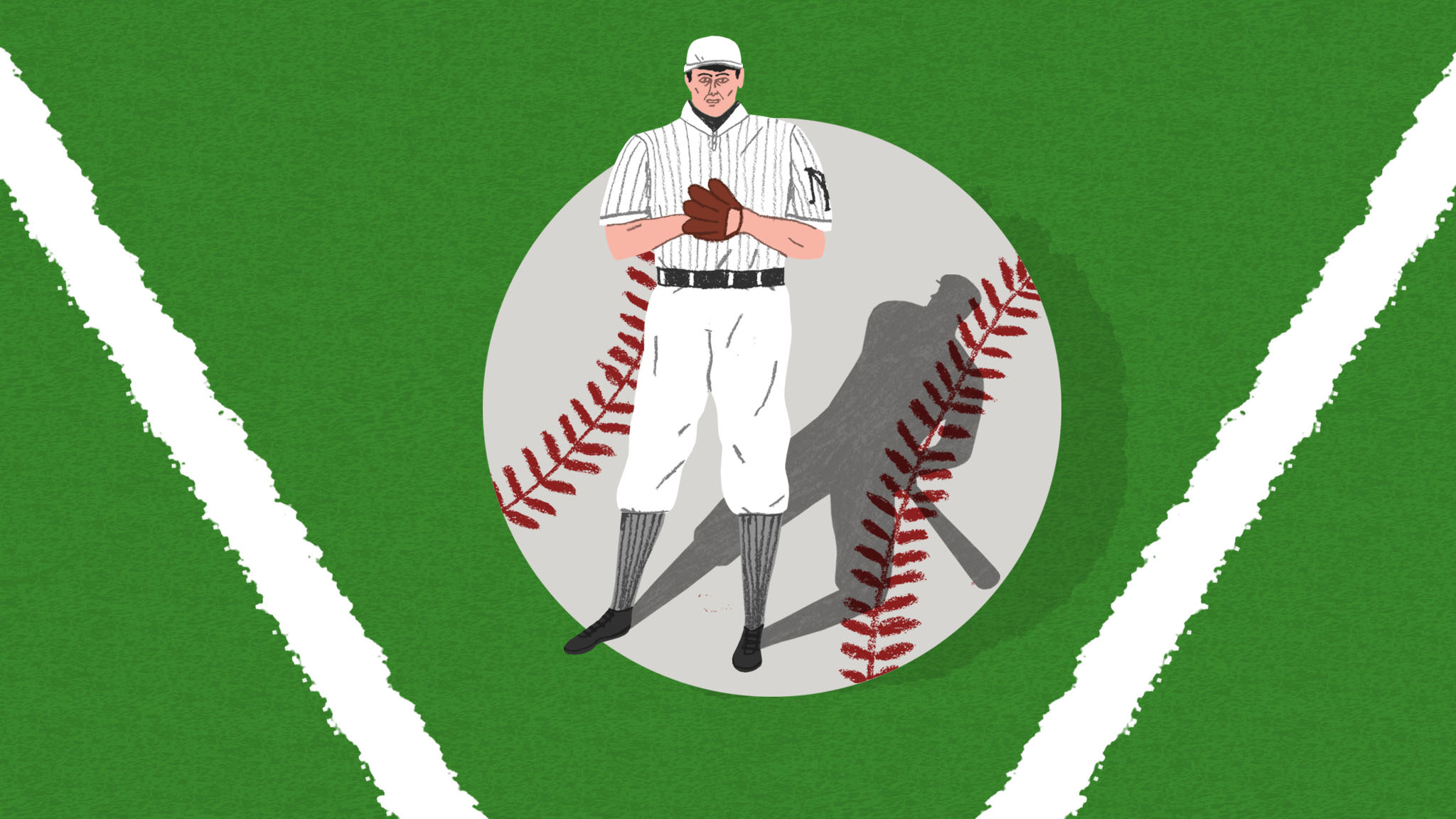The Very Respectable Adventures of Gentleman Matty and Dime-Novel Frank
At the turn of the twentieth century, two impossibly perfect heroes captured America’s hearts and minds. Did hall-of-fame pitcher Christy Mathewson inspire pulp fiction heartthrob Frank Merriwell, or was it the other way around?

Illustration by Michael Parkin
“Get out!”
Thump. A shrill howl of pain.
“Stop it! That’s my, dog!”
“Oh, it is? Then you ought to be kicked, too. Take that for your impudence!”
Cuff! A blow from an open hand sent the boyish owner of the whimpering poodle staggering to the ground, while paper bags of popcorn flew from his basket and scattered their snowy contents around.
“That was a cowardly blow!”
With that last line of his debut appearance in Street & Smith’s Tip Top Weekly in 1896, Frank Merriwell entered Fardale Academy. Over hundreds of dime novels, young Merriwell would perform impossible feats on the baseball diamond and the gridiron. He would foil kidnappers and killers, scoundrels and thieves. He would become one of the most famous fictional characters in the country. But first, he had to stop a bully. He handled the haughty, overdressed dog-kicker with characteristic grace, displaying such mettle that the vanquished bully — like so many of Merry’s future opponents — became his “admir…
Keep reading with a 7-day free trial
Subscribe to Narratively to keep reading this post and get 7 days of free access to the full post archives.



